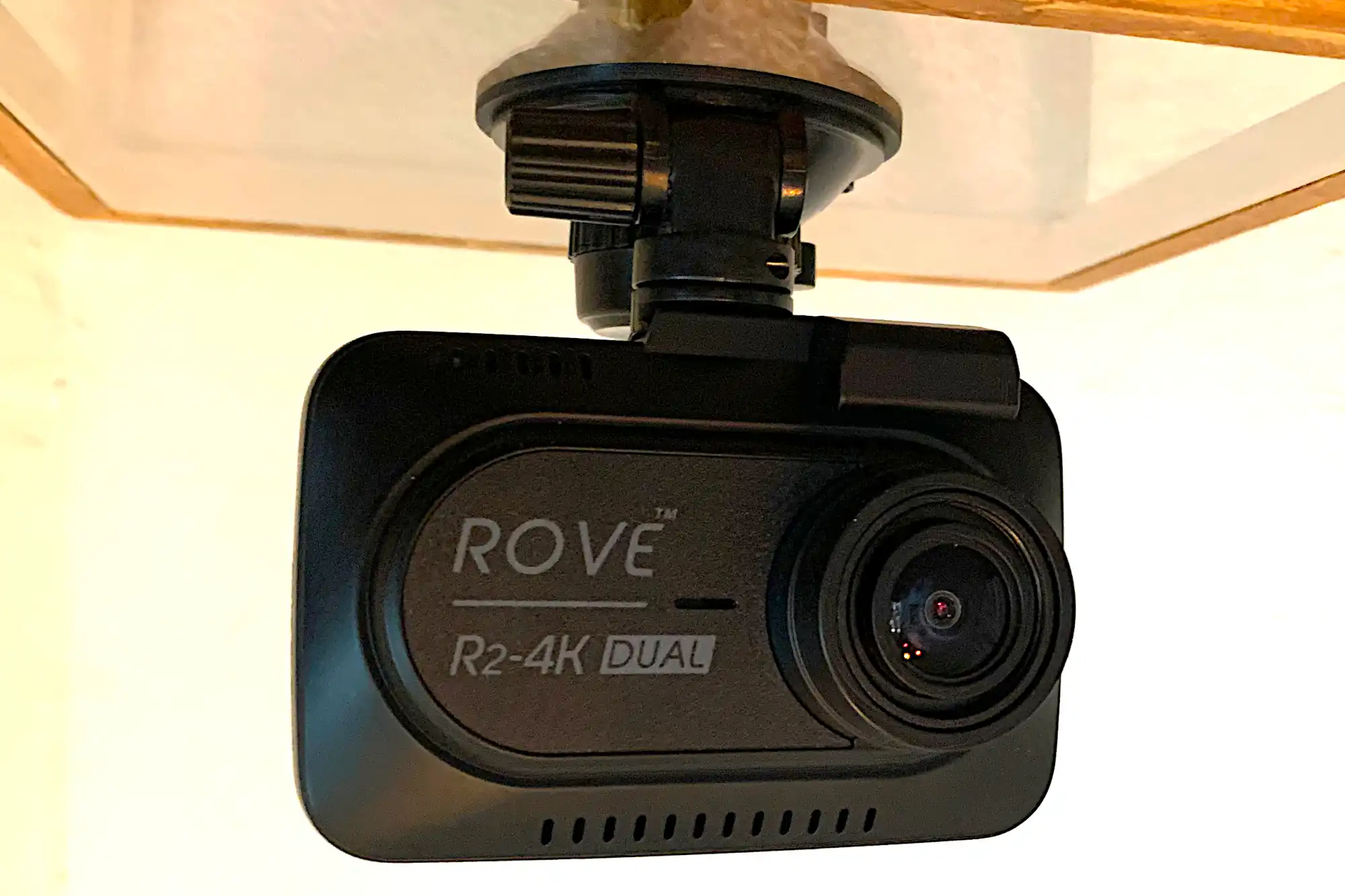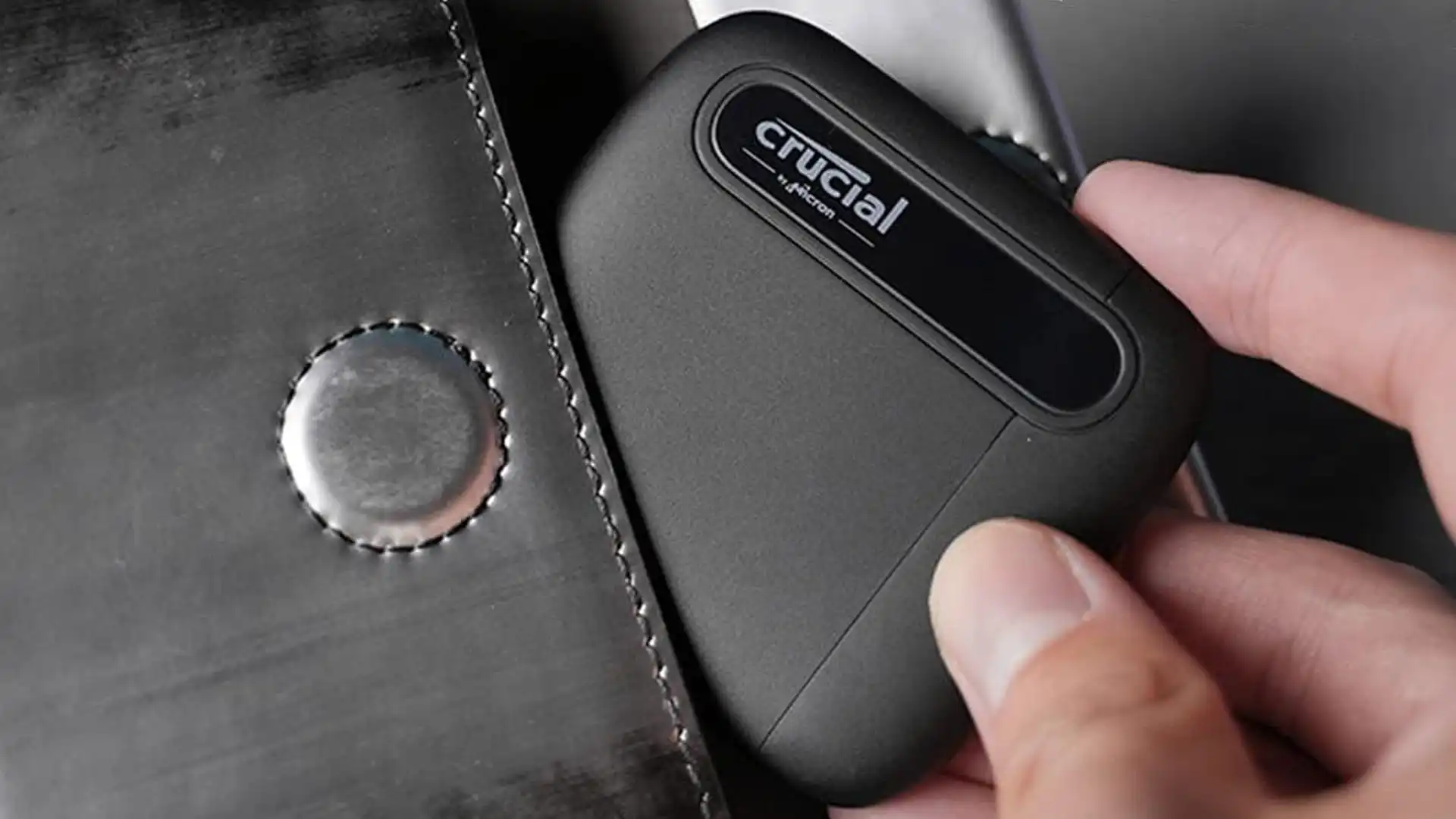Integrated GPS and phone connectivity highlight this affordable two-channel dash cam. But captures could be better.
The R2-4K Dual is basically the R2-4K Pro we reviewed not long ago, but with the addition of a rear camera. Most of what I liked then, I still like, and what I didn’t, I still don’t. A removable rear camera does prove an especially nice touch, however. And the price pushes this system into contention.
What are the Rove R2-4K Dual’s features?
The Rove R2-4K Dual is a two-channel, front/rear dash cam system. Front captures are 4K/2160p maximum (you can also use 1440p or 1080p to save space) while rear captures are 1080p. The front field of view is 150 degrees, while the rear is 140 degrees.
GPS is integrated into the camera and the resulting location data is watermarked onto the video. It’s also embedded into the files for playback purposes. And a shout out to Rove for actually employing it to set the time and date automatically. A sad number of vendors still don’t provide this amenity.

Above you can see the Rove R2-4K Dual’s 3-inch color display, the menu and function buttons, as well as the suction mount stuck to the rear window of my apartment. (Just in case you were thinking I’d driven into a garden.)
Suction mounts work far better these days than most people realize, but yes, once every few months you may have to re-affix it to the windshield. Rove thoughtfully provides a smaller, semi-permanent adhesive-type mount if you’d prefer a more lasting solution.
On the left of the camera are the TF card slot and power button, while on the right is the Type-C connector for the auxiliary power cable. The Type-C connector (kudos for modernity) for the rear camera is on the top right.
This brings us to a delightful touch for those who park a convertible on the street — a removable rear camera. Rotate the camera to the proper spot and it simply slides out of its mount.
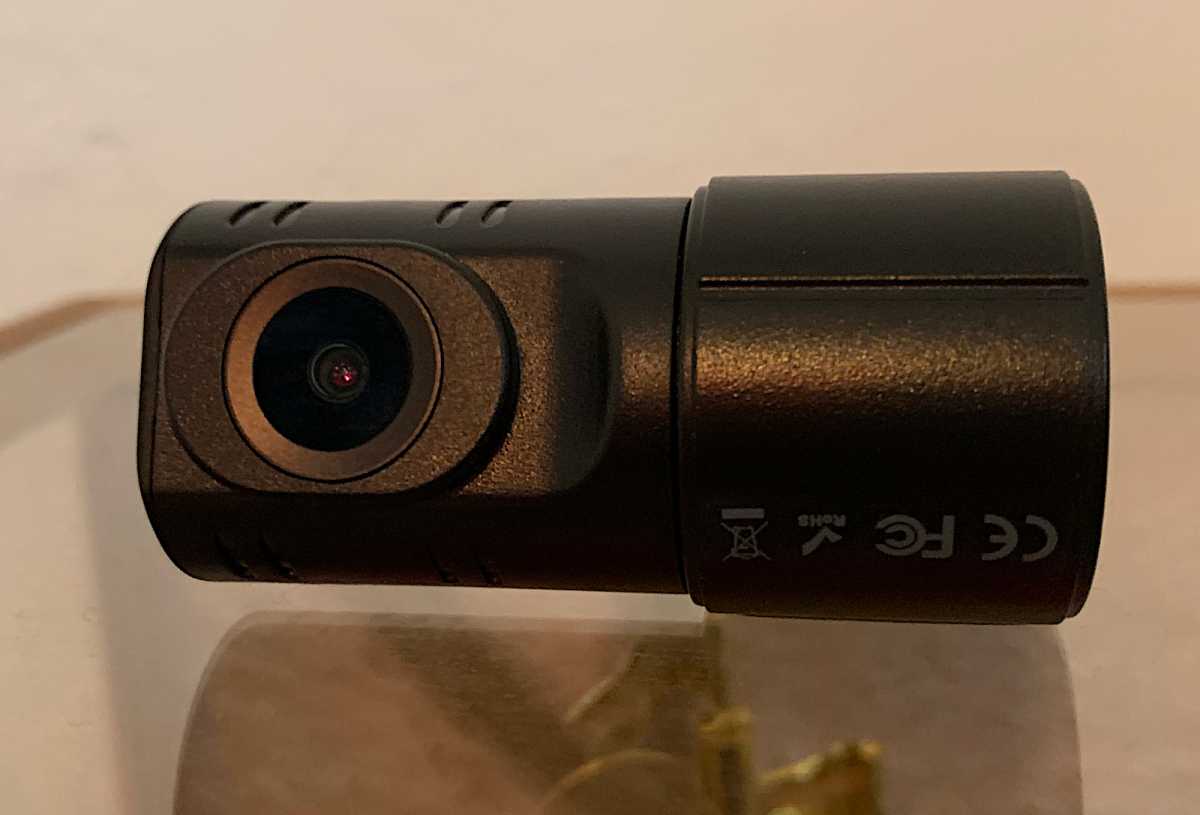
No dash cam is complete these days without phone connectivity and an app. Rove’s app (iOS version) supplied a live view and access to recordings, but for some reason the settings page was blank. Of course, you can set everything via the front camera using the display and buttons, but come on now. Most likely, this new model hasn’t been accommodated and by the time you read this you will be able to use your phone to adjust settings.
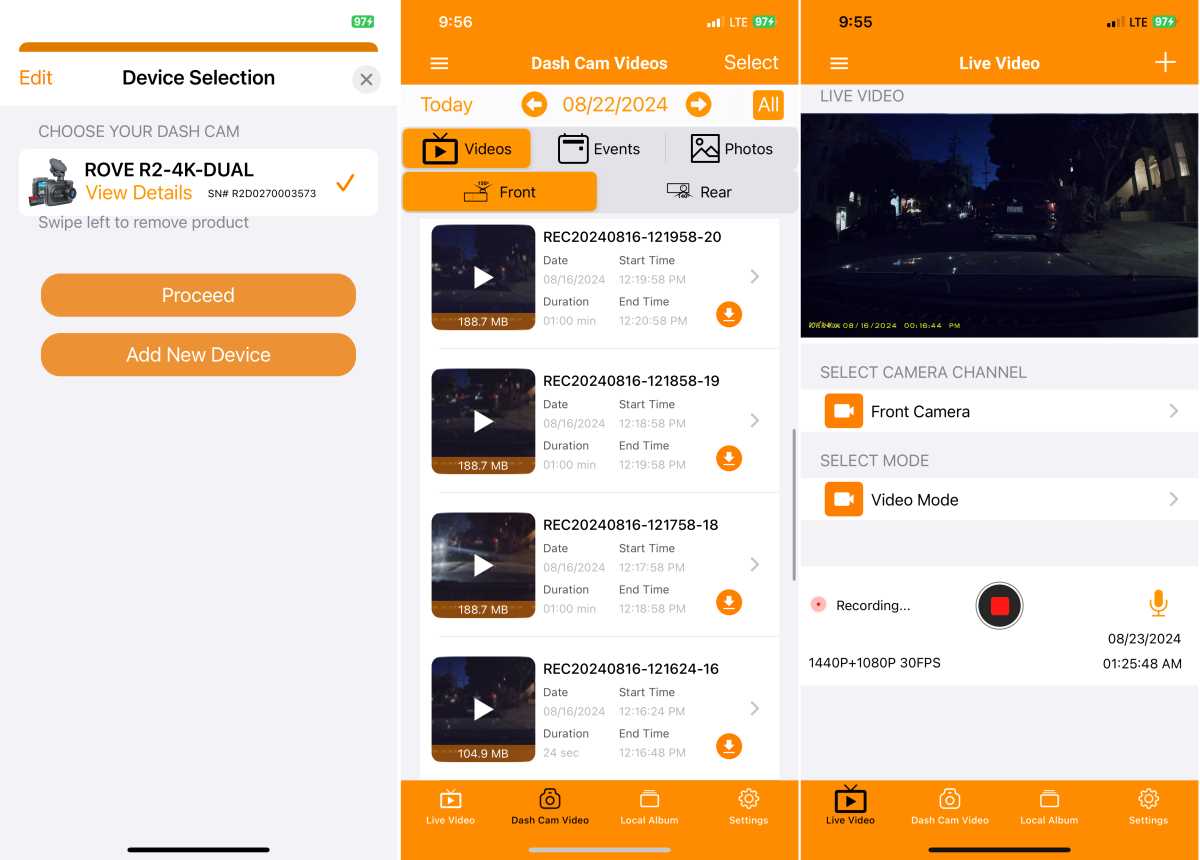
Also on board are voice alerts and guidance.
How much is the Rove R2-4K Dual?
The R2-4K Dual goes for $150, which is very competitive for a two-channel dash cam with integrated GPS.
How are the Rove R2-4K Dual’s captures?
Day captures from both the front and rear cameras were quite good, if slightly overexposed. You can adjust this in the settings, but I always capture with the defaults.
Rove also sent me a polarizing filter, which definitely solved the admittedly mild exposure issue, but also darkened captures at night. What I’m hoping for is that vendors start offering separate exposure adjustments for bright and low-light situations.
Details in daytime video are readily apparent with the R2-4K Dual; there’s not a lot of fish-eye for a 150 degree FOV, and color is largely accurate. But the stabilization wasn’t perfect — there was some jello wobble simply from the vibration of the engine.
Bumps, both light and severe, were handled better for some odd reason. The jello effect isn’t as off-putting as it was with the Garmin DriveCam 76, but it was noticeable and slightly distracting at times.
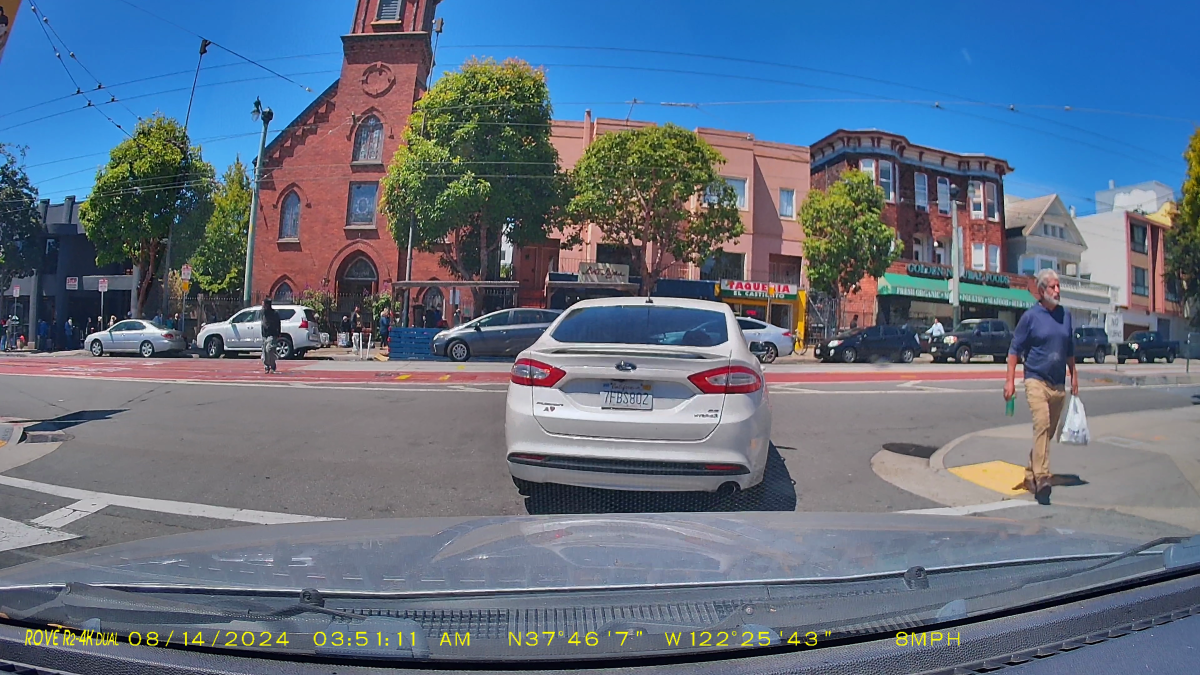
The R2-4K Dual front captures held their own at night in terms of detail and color, but barely. Headlight and other bright spot flare was minimal (the streaking was my windshield) but detail still wasn’t quite what I was expecting from 4K.
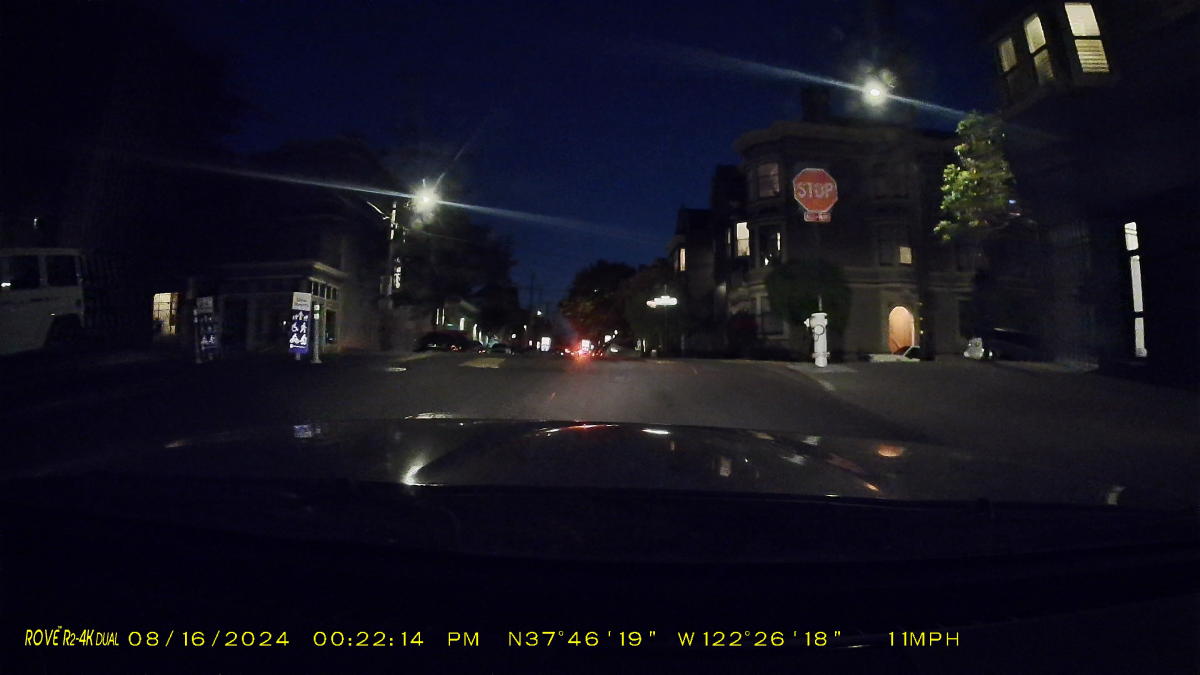
Rear captures during the day offered good detail, and were close to the front day captures in terms of color temperature despite using a different sensor.
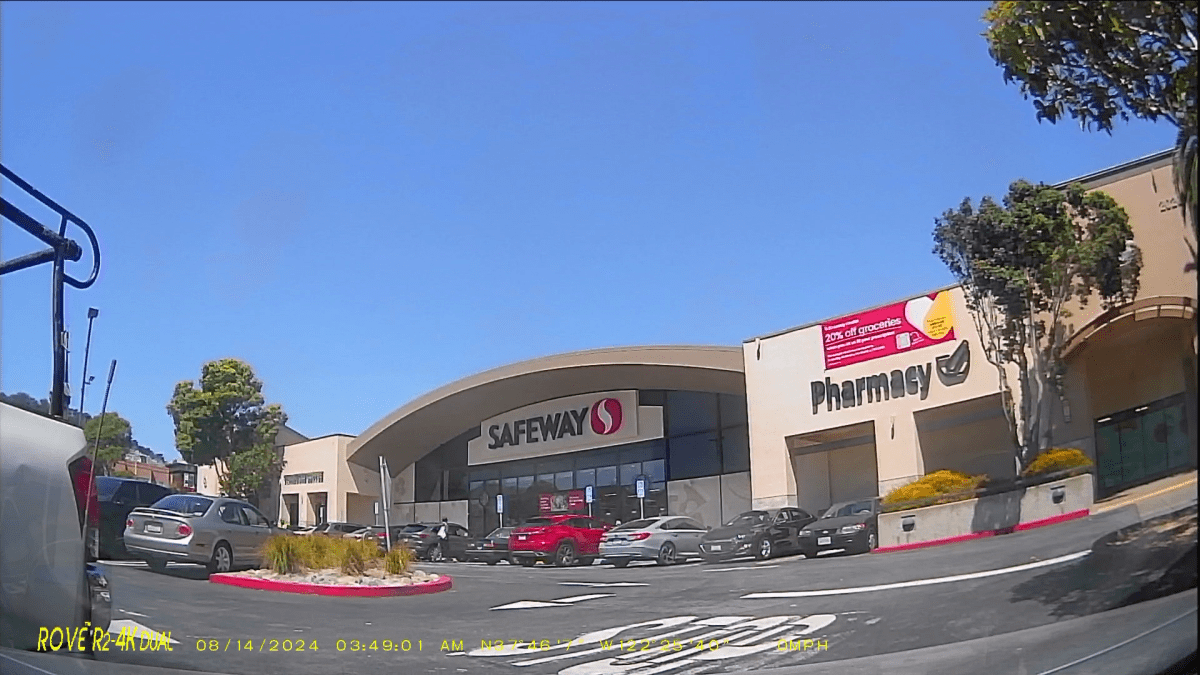
The rear captures at night are less detailed, but will still give you a decent idea of what’s going on. You might not see the license plate numbers though…

Note that the night captures, which might seem a bit dark in the images above, will reveal more detail if you process them with an editor, increasing the brightness or exposure.
If it weren’t for the occasional wobblies (early Go-Pro’s were famous for this), I’d express a higher opinion of the Rove R2-4K Dual’s captures. Overall, they’re about average, which is better than average for the price point.
Should you buy the Rove R2-4K Dual?
In the end, $150 is a pretty good deal for a two-channel dash cam system, and the R2-4K Dual’s captures are serviceable, if not the best I’ve seen. GPS at this price is a major bonus, so it deserves a spot on your list for consideration, but shop around.

